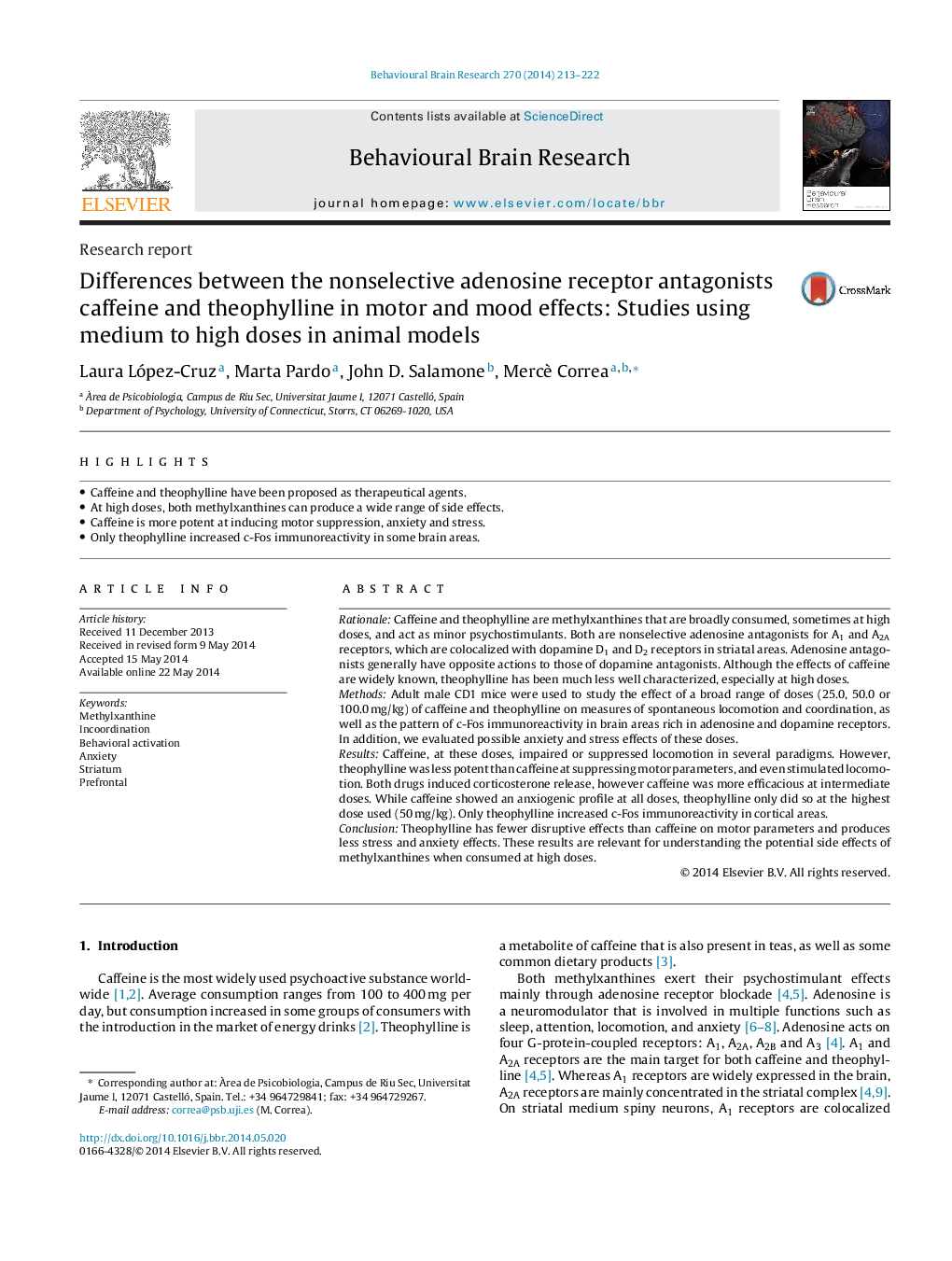| کد مقاله | کد نشریه | سال انتشار | مقاله انگلیسی | نسخه تمام متن |
|---|---|---|---|---|
| 6257930 | 1612962 | 2014 | 10 صفحه PDF | دانلود رایگان |
- Caffeine and theophylline have been proposed as therapeutical agents.
- At high doses, both methylxanthines can produce a wide range of side effects.
- Caffeine is more potent at inducing motor suppression, anxiety and stress.
- Only theophylline increased c-Fos immunoreactivity in some brain areas.
RationaleCaffeine and theophylline are methylxanthines that are broadly consumed, sometimes at high doses, and act as minor psychostimulants. Both are nonselective adenosine antagonists for A1 and A2A receptors, which are colocalized with dopamine D1 and D2 receptors in striatal areas. Adenosine antagonists generally have opposite actions to those of dopamine antagonists. Although the effects of caffeine are widely known, theophylline has been much less well characterized, especially at high doses.MethodsAdult male CD1 mice were used to study the effect of a broad range of doses (25.0, 50.0 or 100.0Â mg/kg) of caffeine and theophylline on measures of spontaneous locomotion and coordination, as well as the pattern of c-Fos immunoreactivity in brain areas rich in adenosine and dopamine receptors. In addition, we evaluated possible anxiety and stress effects of these doses.ResultsCaffeine, at these doses, impaired or suppressed locomotion in several paradigms. However, theophylline was less potent than caffeine at suppressing motor parameters, and even stimulated locomotion. Both drugs induced corticosterone release, however caffeine was more efficacious at intermediate doses. While caffeine showed an anxiogenic profile at all doses, theophylline only did so at the highest dose used (50Â mg/kg). Only theophylline increased c-Fos immunoreactivity in cortical areas.ConclusionTheophylline has fewer disruptive effects than caffeine on motor parameters and produces less stress and anxiety effects. These results are relevant for understanding the potential side effects of methylxanthines when consumed at high doses.
Journal: Behavioural Brain Research - Volume 270, 15 August 2014, Pages 213-222
